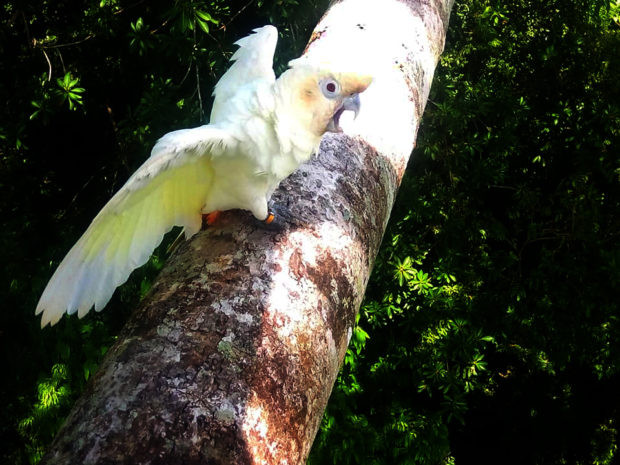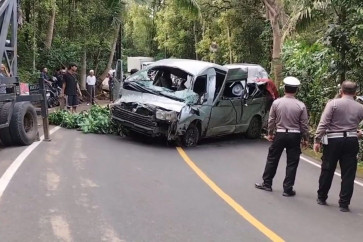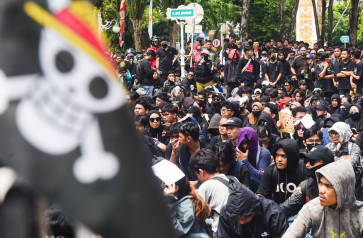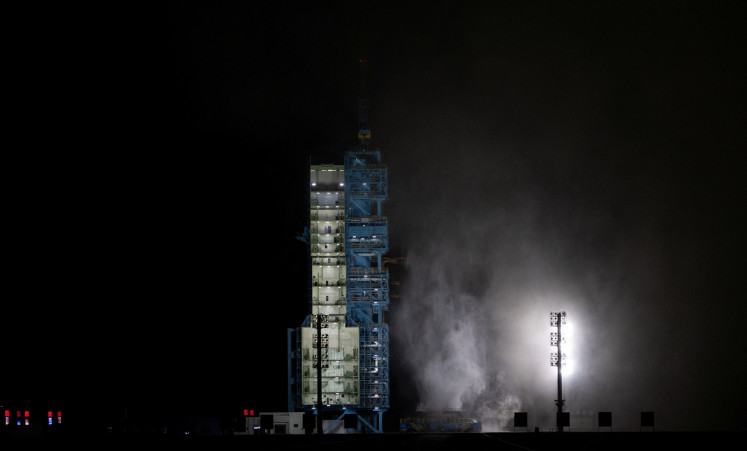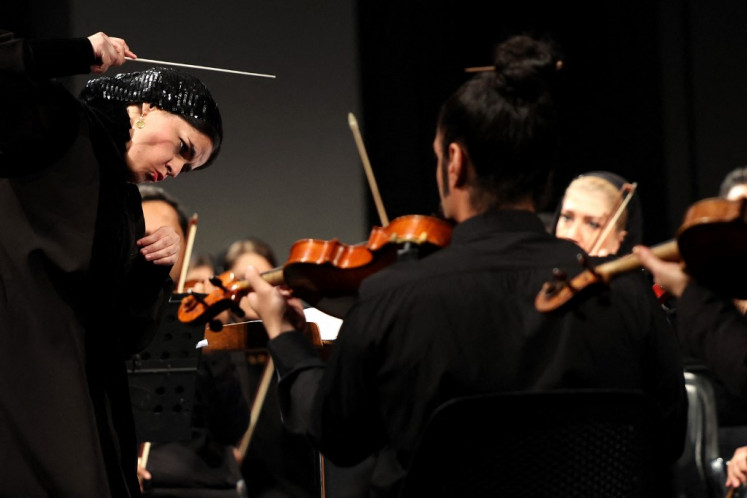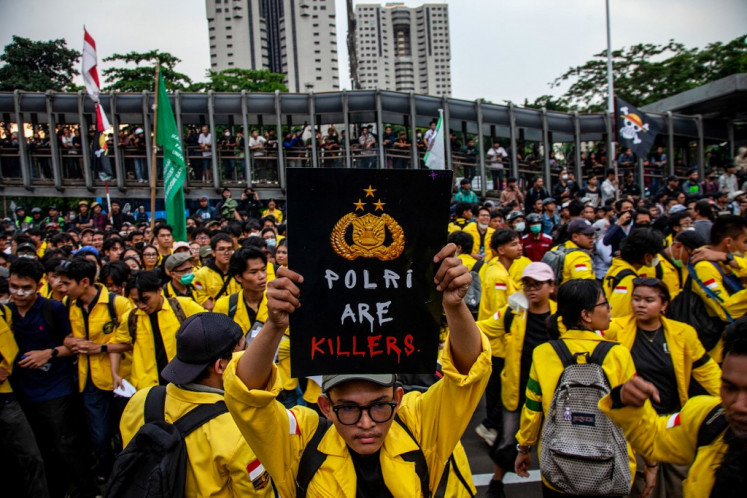Popular Reads
Top Results
Can't find what you're looking for?
View all search resultsPopular Reads
Top Results
Can't find what you're looking for?
View all search resultsPhilippine cockatoo hatchling in wild gives hope
Change text size
Gift Premium Articles
to Anyone
F
our years after she was rescued and released back to the wild in Palawan province, Gold, a Philippine cockatoo (Cacatua haematuropygia), has successfully hatched an egg, marking a success story amid the persistent threats to her species’ dwindling numbers.
The critically endangered bird was among the five hatchlings that were rescued in the Dumaran Island Critical Habitat in May 2016.
Wildlife wardens working under the Philippine Cockatoo Conservation Program of Katala Foundation Inc. (KFI) found the young birds starving due to the lack of food during the extremely dry months.
When she was rescued, Gold, which was named after the color of her leg band, weighed less than 60 grams—half of the normal weight for a cockatoo hatchling.
“To rescue hatchlings is a tough [decision] to make,” said Peter Widmann, KFI species conservation program director. “The great challenge is releasing them back to the wild and monitoring whether they are accepted by the wild flock.”
Pet trade, habitat destruction
Locally known as “katala,” Philippine cockatoos or red-vented cockatoos used to be found all over the country’s lowland forests and mangroves. But habitat destruction and poaching for pet trade pushed their population to near-extinction.
This endemic bird was also widely hunted, even for leisure, since some people consider them agricultural pests.
To date, there are only roughly 1,000 Philippine cockatoos left in the wild, with 90 percent of the global population found in Palawan province. Close to 75 percent are in the four project sites of KFI in the province, the biggest of which is in Rasa Island Wildlife Sanctuary, home to close to 500 cockatoos.
When Gold and the other hatchlings were rescued, they were brought to KFI’s center in Narra town, where they were nursed back to health, said Indira Lacerna-Widmann, KFI chief operations officer.
Monitoring and rescuing hatchlings are no walk in the park: wildlife wardens need to climb up trees 10 to 80 meters to reach their nests.
When the birds began to gain weight, they underwent a soft release back in Dumaran, where they were taught how to survive in their natural habitat by relearning how to get their natural food and avoid predators.
In partnership with the Palawan Council for Sustainable Development and the Department of Environment and Natural Resources, KFI fully released the birds in January 2017.
Lacerna-Widmann said Gold’s successful breeding four years after her rescue and rehabilitation showed that she was able to fully reintegrate with the wild population.
“The natural population of the Philippine cockatoo in Dumaran is very low,” she said in an interview last week. “This breeding supplements their population with new ones and increases the genetic diversity of the species.”
Read also: Feline good: French cat survives coronavirus infection
In protecting this critically endangered species, KFI and its partners engage with communities in its project sites, including indigenous peoples, particularly since the cockatoos live in lowland forests and in close proximity to humans.
Under the conservation program, former poachers are employed and trained to monitor and protect the cockatoos and their habitats, using the traditional knowledge and skills that they used to employ in their hunting days.
But one persisting threat to its survival, Lacerna-Widmann said, is the changing climate, which makes it harder for the birds to find food and to breed.
Feeding on seeds, fruits, flowers and buds, the cockatoo is dependent on good weather for its subsistence. Unfortunately, the longer and more extreme dry seasons have been taking a toll on its food source.
KFI monitoring has shown that there is a significant correlation between rainfall from November to January and the breeding season of the cockatoos from January to March.
El Niño effect
The foundation has observed that the El Niño phenomenon, which happens every five years since 2005, has affected the cockatoos’ mating activities, according to Lacerna-Widmann.
“It has disrupted the normal breeding season,” she said. “Maybe the cockatoos are very resilient also, but climate change has a huge impact on their breeding success.”
If the dry season beginning November is so extensive, for example, it is likely that there will be no hatchlings during that breeding season.
“For their survival,” she said, “it is important that climate change does not worsen.”
Despite these challenges, KFI and its partners continue to double their efforts to ensure the survival of the critically endangered cockatoo.
Even amid the COVID-19 crisis, their work has not stopped, thanks to the support of local government units in project areas and funders, such as Wildlife Reserves Singapore, Chester Zoo, Beauval Nature, Fondation Segré, Zoologischen Gesellschaft für Arten und Populationsschutz in Germany and Loro Parque Fundacion in Spain.
“Every single individual counts,” Lacerna-Widmann said, “and every breeding season counts as well.”
This article appeared on the Philippine Daily Inquirer newspaper website, which is a member of Asia News Network and a media partner of The Jakarta Post

